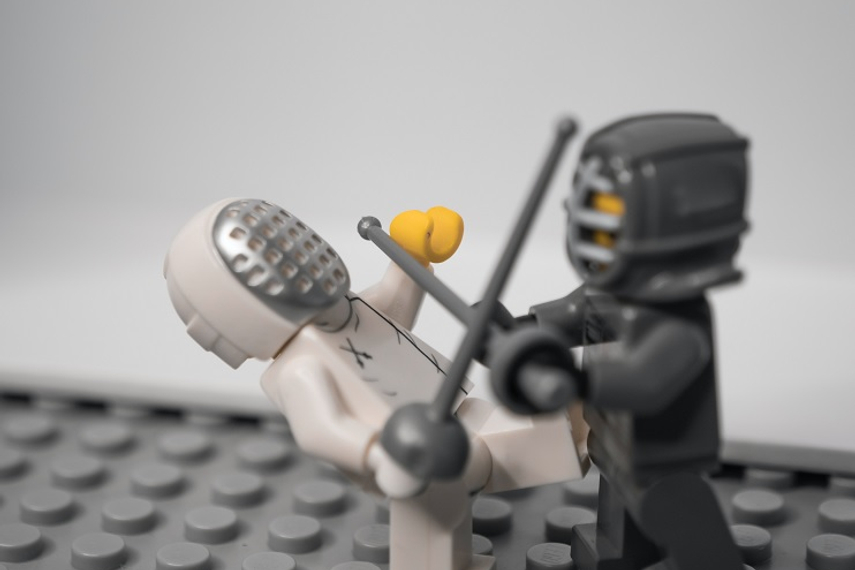The ad world is no newbie to communication which pits one brand against another. Whether any sort of comparison is a case for proving one’s superiority over the other or is simply a gimmick to gain momentary recognition, is debatable. Over the history of advertising, comparisons have provided unforgettable campaigns, right from the infamous cola wars between Coke and Pepsi beginning in the late 1970s, to the war between Lalitaji’s Surf, and Nirma detergent powders in India.
We took a look at what goes into the making of an ad war.
Behind-the-scenes of an ad war
Needless to say, any comparison for public viewing is done to garner eyeballs. However, it’s important to understand the fundamental difference that not all comparative advertising is competitive. “It becomes competitive only if the point of superiority is relevant to the end consumer. For example, does the end consumer see the effect of pH value instantly as in the case of Sebamed?” asks Kiran Khalap, co-founder and managing director, Chlorophyll Brand & Communications Consultancy, who explains that such communication helps the brand communicate its difference in a telegraphic manner, especially since the comparison is usually on product specifics and not necessarily about what the brand stands for.
A big company with enormous clout and market share does not need to take a dig at anyone else. However, it’s always the challenger brand that hits out at the biggies. “When a smaller brand which has just entered the market compares itself to a bigger brand, what it is aiming for is the instant recognition and awareness, without which it would have to take the long route of building its brand and equity from scratch,” said Mayank Shah, senior category head, Parle Products.
Impact on brands and consumers
Consumers today are gravitating towards brands that exhibit their purpose not only in ads, but also in their acts. Speaking about why brands find such communication exciting, Ramanuj Shastry, co-founder, Infectious Advertising, believes that plain vanilla advertising and drawing upon the brand's strengths has no masala or gossip, which people actually enjoy since ad-free today is a luxury and people change channels the moment advertisements appear. Although mind-blowing, consumers today are informed and aware of the reasons behind such attacks. “They look sceptically at claims and counter-claims, which are more questionable since people rarely believe advertising”, he added.
Comparative advertising is tactically superior, but over time, the brand needs to prove its strategic credentials and state what it exactly stands for beyond the product. Citing examples from the hard lesson learnt by Surf Excel from its history of comparing itself to Nirma, Khalap (who was also involved in the campaign) says, “Target segments that had not been exposed to Surf’s earlier superlative claim ‘Surf washes whitest’ started comparing Surf to Nirma, only because in its ads, Surf compared itself to Nirma. Over time, Surf had to drop the comparison and introduce Wheel as the brand that could take on Nirma.”
Brands like Maruti and Hyundai, Complan and Horlicks have had classic ad fights which made for great tea-time conversations. However, this sort of communication rarely has an actual impact on brands in terms of boosting sales. “Ambushing only generates some excitement and creates awareness if both the brands are well known, since they receive some sort of word-of-mouth. Beyond that, it can only help boost sales for smaller brands,” added Shah, who explains that consumers would be interested in knowing what the smaller brand taking a bold dig on the bigger one has to offer.
However, given the legal and regulatory recourses available, Arvind RP, director – marketing and communications, McDonald’s India West and South, believes that a sustained impact from comparative advertising campaigns is unlikely. “In some cases, especially with a sharp feature or benefit comparisons and clever advertising, challenger brands are able to get a point of advantage across, albeit briefly. But, in my view, these efforts cannot substitute classical consumer marketing, focused on the needs and desires of the consumers.”
Although comparative advertising makes for good banter, putting money on the counter is questionable. Brands do suffer from this practice and bigger brands do not like to be on the defensive. Shastry of Infectious, who has worked on iconic campaigns like Coca-Cola’s ‘Thanda matlab Coca-Cola’ tells us how the cola wars between Coca-Cola and Pepsi (wherein the latter ribbed the former, resulting in a long-term rivalry between the two) always rattled Coke. “It’s a bee in the bonnet for the marketing guys when their company is being attacked. Coca-Cola as a brand will never retaliate. The bigger ones never resort to replying and it’s the new ones who get to do some aggressive play out of this, since Coke will always be classic Coke,” he said.
Although some brands have built themselves up by wiping the floor with their competitors, it was always done with a sense of humour aimed at entertaining audiences and generating brand recall. However, such communication doesn’t necessarily push consumers towards the competition.
“While brand wars do create headlines and have the potential to go viral, it is debatable if it leads to actual behavioural change in consumers. At the end of the day, the consumer will focus on the attributes that are relevant to them. For us building relevance is always more important than creating differentiation,” says Dheeraj Sinha, MD – India, and chief strategy officer, South Asia, Leo Burnett, who is of view that advertising wars could lead to a huge financial drain in the long term, not proving to be worth the effort.
Giving his take on the Sebamed controversy, Shastry believes that the situation is as good as comparing apples to oranges. “Both the products are not in the same price range. The consumer who buys Dove is not going to switch to a Sebamed soap which costs Rs 200. This is marketing fraternity excitement and everybody likes the underdog. Most people do not even know about HUL, but the brands that come under it. It is all a cheap thrill.”
Legal ramifications
Comparative advertising, even the kind where the product is named, is legally allowed as long as the comparison is a fair one which educates consumers. “They must adhere to certain principles of fairness and honesty and not choose points of comparison that confer an artificial advantage. The comparisons need to be factual and backed with relevant substantiation, which does not denigrate or discredit a competitive brand," said Subhash Kamath, chairman, ASCI. ASCI usually handles advertising matters that are not under legal jurisdiction.
Speaking about the brand sentiments, Shah says that smaller brands have very little to lose and sometimes make claims that are not even true. “Almost always, the first reaction for a targeted brand is to take legal action. However, there are times when the confrontation is not worth it because if the claim is genuine, the bigger brand chooses to ignore and let the situation fizzle out with time.”
Smaller brands sometimes aim to push the known ones over the edge, just so they retaliate, resulting in more attention and headlines for the wee ones. Bigger brands, on the other hand, have legal departments that decide the merits of pursuing a case.
All complaints registered against advertisements are redressed by ASCI’s Consumer Complaints Council (CCC), a non-legal advertising governing body. If the complaint is upheld, then the advertiser is informed of the CCC’s decision within a week and gets 10 business days to withdraw or modify the advertisement.
The root of the notoriety
The idea to compare can come from either of the sides and there are times when the client himself briefs the creative agency, demanding for comparisons to be made. “More often than not, you'll find such ideas coming up from creative agencies. Typically, clients don’t want to accept it even if they want to do it,” says Shah. In the end, the client needs to approve it, he admits, acknowledging that agencies want to do things that are disruptive and edgy.
On the contrary, although an ad like this generates a lot of talk points and buzz around the brand, Shastry is certain that it is usually the marketing team which gets riled up and asks for such comparisons, against the good advice of the creative agency.
Arvind calls the root a collaborative effort by both, the brand teams as well as the creative partners.
However, in a case involving legal action, the creative agency gets questioned but is absolved from any legal implications, since they had received client approval.
The role of PR
If the bigger brand is not looking at the legal way out, it might resort to other tools like PR. PR comes into play and educates consumers about the insignificance of a particular benefit.
“If the client decides to take the comparative route, the PR agency complements it by providing supportive content in the form of facts that back the campaign. Such communication is usually spearheaded by advertising agencies and is backed by evidence in the form of independent testing and the like. It’s rare for PR agencies to lead such an outreach,” says Jaideep Shergill, co-founder, Pitchfork Partners Strategic Consulting, who states that PR agencies have a key role to play in creating messaging around the campaign and managing media queries.
Brands usually use their PR machinery to push their viewpoint when they want to avoid a confrontation. However, at a time like this, Shah believes there is no better asset than consumers who will vouch for the brand. Having said that, PR cannot completely disassociate from such communication.
Future of comparative advertising
Consumers are interested in knowing which brand is forward enough to mud-sling the known ones. However, such communication always requires brands to justify their existence by shedding light on what they actually have to offer. “If you don't have enough stuff to prove why you are better, then you'll only be known as the guy who threw the mud. It's not necessarily a long-term plan,” added Shastry who explains that most brand managers and CMOs working on a campaign change every three years, none having a 10-year-vision.
That being said, the entire policy behind comparative advertising thrives on the fact that people forget about it and hence, is here to stay. Only people in the business are memory keepers of advertising.
Nevertheless, while all’s done in good spirit, brands must understand the pros and cons behind such ambushed communication. They must remember that when they compare, they also become comparable!




.jpg&h=334&w=500&q=100&v=20250320&c=1)
.jpg&h=334&w=500&q=100&v=20250320&c=1)

.png&h=334&w=500&q=100&v=20250320&c=1)

.png&h=334&w=500&q=100&v=20250320&c=1)

.jpg&h=334&w=500&q=100&v=20250320&c=1)


.jpg&h=268&w=401&q=100&v=20250320&c=1)

.jpeg&h=268&w=401&q=100&v=20250320&c=1)
.jpeg&h=268&w=401&q=100&v=20250320&c=1)



